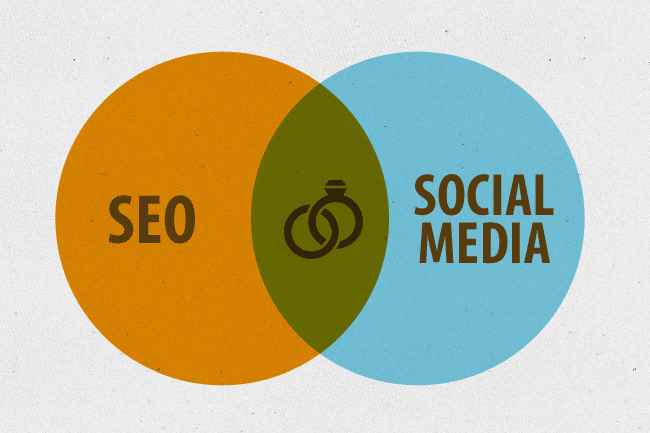In 2024, the internet is nothing if not a vast field of dynamic change and ever-growing opportunities where you can prove your worth. Like everything else, new scopes of opportunities are accompanied by endless competition and the world of the internet is no different. Fortunately, however, the race to the best is much easier to win if you have a robust website in place. Website migration often adds the much-needed flourish that your platform was previously missing, creating more nuanced pathways of elevated site performance and interaction.
However, site migration can turn out to be quite a delicate procedure, particularly where SEO is concerned. If not done properly, you will run the risk of jeopardizing your existing SEO standing, which can be cataclysmic for your platform or brand.
This technical SEO guide for SEO migration will help you successfully lead a super-smooth digital transition to website empowerment. Whether you’re a seasoned pro or a digital novice, this SEO checklist for website migration is your ticket to a hassle-free journey of unprecedented online success in 2024.
Why is SEO Migration Important?
Picture this: You’re orchestrating a grand performance, moving your website from one stage to another. Amidst the intricacies of this choreography, you mistakenly overlook one of the most important performers — SEO. Needless to say, without your best performer on board, it is very likely that your grand performance will come crashing down.
Hence, SEO migration while migrating your website should be treated as more than just a routine shift. Remember, it’s not just a technical maneuver; it’s about safeguarding and elevating your digital footprint. Above all, you must ensure precision, without which your SEO ranking – the lifeblood of your online visibility – may suffer.
Pre-Migration Preparation: Laying the Foundation
Embarking on a website migration without laying a solid foundation is akin to setting sail without a map—it’s a recipe for getting lost in the vast digital ocean. As such, it is important to first sculpt the groundwork for a seamless transition.
Keyword Analysis and Mapping: Unveiling Your SEO Blueprint
First things first, get your keywords straight. Conduct a thorough analysis of your existing set and map them meticulously to the new structure. Keywords aren’t just words; they’re the essence of how search engines connect users to your content. Ensure each page has its designated keywords, painting a clear picture for both algorithms and visitors.
URL Structure: Crafting a Clear Path
A maze of confusing URLs benefits no one. Define a straightforward and consistent URL structure for the new site. Think of it as signposts that direct search engines as well as users towards your content. Make them concise, relevant, and rich in appropriate keywords.
Content Inventory: Taking Stock of Your Digital Assets
Before the big move, it’s inventory time. Catalog every piece of content, from blog posts to product pages. Identify what needs to be migrated as is, what can be consolidated, and what requires a touch-up. To put it simply, try to declutter your website as much as possible, and make room for a sleeker and more efficient website.
As you lay this pre-migration groundwork, remember: a well-prepared ship sails smoothly. On the internet, a well-prepared website navigates SEO migrations seamlessly.
Technical SEO: Navigating the Tech Terrain
Now that we’ve laid the foundation, it’s time to put on our digital boots and get to work with the technical intricacies of SEO migration. Think of this phase as the engine room—the powerhouse that propels your website smoothly through the digital landscape.
301 Redirects: Guiding the Way
Where technical SEO migration is concerned, 301 redirects are the navigational beacons. Implement these redirects to guide search engines and users seamlessly from the old URLs to the new ones. This will do well in preserving the equity your old URLs have earned over time.
XML Sitemap and Robots.txt: The Communicators
Picture XML sitemaps and robots.txt files as your website’s communicators with search engines. Update the XML sitemap to reflect the new structure and ensure your robots.txt file invites search engines to explore and index your site effectively.
Page Speed Optimization: Accelerating the Journey
For SEO migration, speed is the unsung hero. Make sure your new website is fast and accessible by optimizing your page speed. Compress images, use browser caching, and enable compression for faster and smoother page loading. A swift website not only pleases users but also earns favor from search engines, contributing to a smoother digital journey.
Content Migration: Safeguarding the Digital Cargo
As our digital vessel sails through the technical currents, we reach a critical juncture—content migration. Much like transporting precious cargo, this phase is about ensuring your content arrives at the new destination intact and ready to captivate your audience.
Content Formatting: The Visual Symphony
Imagine your content as a visual symphony, each element playing its part harmoniously. During migration, ensure that your content retains its formatting—headings, paragraphs, and multimedia elements should dance seamlessly onto the new stage. A visually appealing presentation will please users to the core and shape search engine preferences no less.
Internal Linking Structure: Building Bridges
Your content isn’t an isolated island—it’s part of a digital archipelago connected by internal links. Recreate and optimize your internal linking structure during migration. Think of it as building bridges that guide both users and search engines, distributing link equity across your website effectively.
Duplicate Content Checks: Eliminating Shadows
In the digital space, shadows can be detrimental. Use tools to identify and eliminate any duplicate content that may sneak into your migration process. Duplicate content not only confuses search engines but can also cast a shadow on your SEO efforts. Shine a light on uniqueness and quality.
Post-Migration SEO Audit: Polishing the Final Shine
With your digital cargo safely transported through content migration, it’s time for the final act—a meticulous post-migration SEO audit. This phase is the equivalent of walking through your new home, making sure everything is in its rightful place and shining brightly.
Crawl the Site: Unveiling Hidden Corners
Imagine your website as a house, and search engines as curious explorers. Use tools like Google Search Console to crawl the new site, unveiling any hidden corners or potential crawl errors. Addressing these promptly ensures search engines navigate your digital space without stumbling.
Monitor Rankings and Traffic: Observing the Audience Applause
Rankings and traffic will determine what is working and what is not. Keep a close eye on these parameters post-migration; any sudden drops may signal issues that need immediate attention. A successful SEO migration is about making sure that your audience continues to applaud your content in the new venue.
User Experience (UX) Testing: Ensuring Applause from the Audience
Only the audience can tell you how your website performs. Hence, listening to them is crucial after SEO migration. Conduct thorough UX testing to ensure users have a seamless experience. Check navigation, forms, and overall functionality.
Communication and Stakeholder Management: Keeping Everyone in the Loop
Amidst the technicalities of SEO migration, an often underestimated aspect is the art of communication. Think of it as the conductor’s wand, guiding your team and audience through the symphony of change. In this section, we explore the crucial role of communication and stakeholder management in ensuring a harmonious migration.
Internal Team Communication: Tuning the Orchestra
Your internal team is the orchestra, each member playing a unique instrument in the migration symphony. Keep them well-tuned by providing clear communication about the migration timeline, potential challenges, and their respective roles. A synchronized team ensures a smooth performance.
External Communication: Setting the Stage for Your Audience
Your audience is the eager audience awaiting the performance. Communicate with them about the migration. Notify them well in advance, providing information on any potential downtime and the benefits of the new site. Transparency with your audience builds trust and fosters positive relationships.
Monitoring and Continuous Improvement: Post-Migration Vigilance
Congratulations! Your website has successfully navigated the complex currents of SEO migration. Yet, the world of the internet is ever-changing, and the final chapter of our journey emphasizes the importance of post-migration vigilance and continuous improvement.
Regular Audits: Polishing the Digital Edges
The digital world is dynamic, and regular audits are your toolkit for polishing the edges. Conduct routine SEO audits to identify and address any emerging issues promptly. It’s about ensuring your website remains a well-tuned instrument in the ever-evolving digital orchestra.
Feedback Loop: Capturing the Audience Applause
Your audience holds the key to your website’s success. Encourage your users to help you fill the gaps in your website and improve it by providing constructive feedback. Like a responsive artist, adapt based on user needs and preferences. A feedback loop ensures your website evolves in line with the simultaneously evolving expectations of your audiences.
Choose a Professional SEO Firm
Last but not least, a successful SEO migration wouldn’t be possible if you are not doing it the right way. While the checklist will surely help you navigate the complexities of this delicate procedure, you might always want to seek professional help to eliminate any possibility of failing in your endeavour. Hence selecting a firm that offers professional SEO services including SEO migration will help you erase even the slightest scope of compromising not just the performance and hard-earned SEO standing of your existing website but also of your online credibility.
Wrapping Up
As we conclude our journey of website migration, remember that SEO migration isn’t a one-time performance—it’s an ongoing symphony. By embracing post-migration vigilance and continuous improvement, your website is not just a digital presence; it becomes a flourishing garden in the vast online landscape. In this digital age where change is the only constant, your commitment to monitoring and improvement is the compass that will guide your website to new heights.







